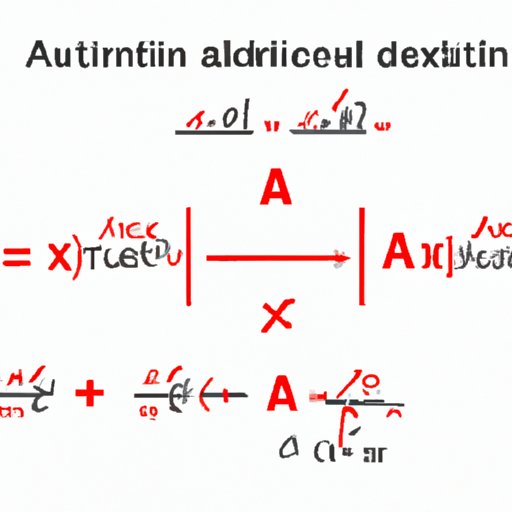
Introduction
Calculus can be a daunting subject for many students, especially when it comes to finding antiderivatives. Simply put, antiderivatives (also called indefinite integrals) are the reverse process of differentiation. They help us find the original function that led to the derived function. But why is it important to understand how to find antiderivatives, and how can we go about finding them? This article will explore the step-by-step guide to finding antiderivatives, the different methods available, and the common mistakes to avoid.
Step-by-Step Guide to Finding Antiderivatives
Antiderivatives are essentially the opposite of differentiation. When we differentiate a function, we find its rate of change or slope at a certain point. Finding its antiderivative is the process of reversing this operation and finding the function from which the derivative was obtained.
The basic rules for finding antiderivatives include the power rule, constant multiple rule, and sum rule.
The power rule states that for every function of x raised to a power n, the antiderivative is (x^(n+1))/(n+1).
The constant multiple rule states that for any constant value multiplied by a function, the antiderivative of that function is the constant value times the antiderivative of the function.
The sum rule states that for any two functions added together, the antiderivative is the sum of the separate antiderivatives.
To find antiderivatives, we apply these rules along with other techniques such as factoring and simplification. Consider the function f(x) = 3x^2 + 2x. Using the power rule and the sum rule, we can find its antiderivative to be F(x) = x^3 + x^2 + C, where C is the constant of integration.
Importance of Finding Antiderivatives
Antiderivatives play a vital role in calculus and many real-world applications such as physics, engineering, and economics. In calculus, we use antiderivatives to solve problems related to area, velocity, and acceleration. In real-world applications, antiderivatives help us understand rates of change and predict future trends.
Moreover, understanding how to find antiderivatives is crucial when studying calculus. It allows us to move to more advanced topics such as integration, differential equations, and multivariable calculus.
Methods of Finding Antiderivatives
There are several methods available for finding antiderivatives, each with its strengths and weaknesses. The most common methods include substitution, integration by parts, and trigonometric substitution.
Substitution involves using a substitution variable to simplify the function before applying the basic rules for finding antiderivatives. Integration by parts involves selecting different parts of the function to integrate separately, then combining the results. Trigonometric substitution involves using trigonometric identities to simplify complex integrals.
The choice of which method to use depends on the complexity of the function and the level of comfort with each method. It is also important to be able to recognize which method to use and when.
Algebraic Techniques for Finding Antiderivatives
In some cases, algebraic techniques such as partial fractions and completing the square can be used to find antiderivatives. Partial fractions is a method of breaking down complex rational functions into simpler functions, making them easier to integrate. Completing the square is a method used for quadratics that enables us to simplify them into recognizable forms for integration.
For example, consider the function f(x) = (x+2)/(x^2+3x+2). Using partial fractions, we can break it down into simpler functions and find its antiderivative to be F(x) = ln(x+1) – ln(x+2) + C, where C is the constant of integration.
Common Mistakes to Avoid and How to Identify Them
When finding antiderivatives, it is important to avoid common mistakes such as forgetting to add the constant of integration, applying the wrong rule, or forgetting to simplify the expression further. It is also important to be able to identify these mistakes and correct them.
One way to avoid common mistakes is by double-checking each step and simplifying the expression as much as possible. It is also helpful to work through many examples and practice repeatedly until the process becomes second nature.
Tips and Tricks for Finding Antiderivatives Efficiently
To work more efficiently when finding antiderivatives, it is helpful to identify patterns and simplify expressions wherever possible. For instance, recognizing that the derivative of ln(x) is 1/x can save time when finding antiderivatives involving natural logarithms. It is also important to use technology such as calculators and software when appropriate.
Conclusion
In summary, antiderivatives play a crucial role in calculus and many real-world applications. Understanding how to find antiderivatives is essential for success in calculus and can lead to exciting future opportunities. By following the step-by-step guide provided here and practicing repeatedly, you can improve your calculus knowledge and find success in your studies and career.





